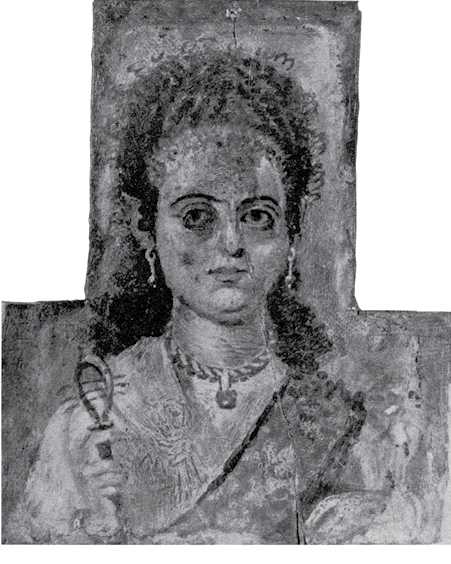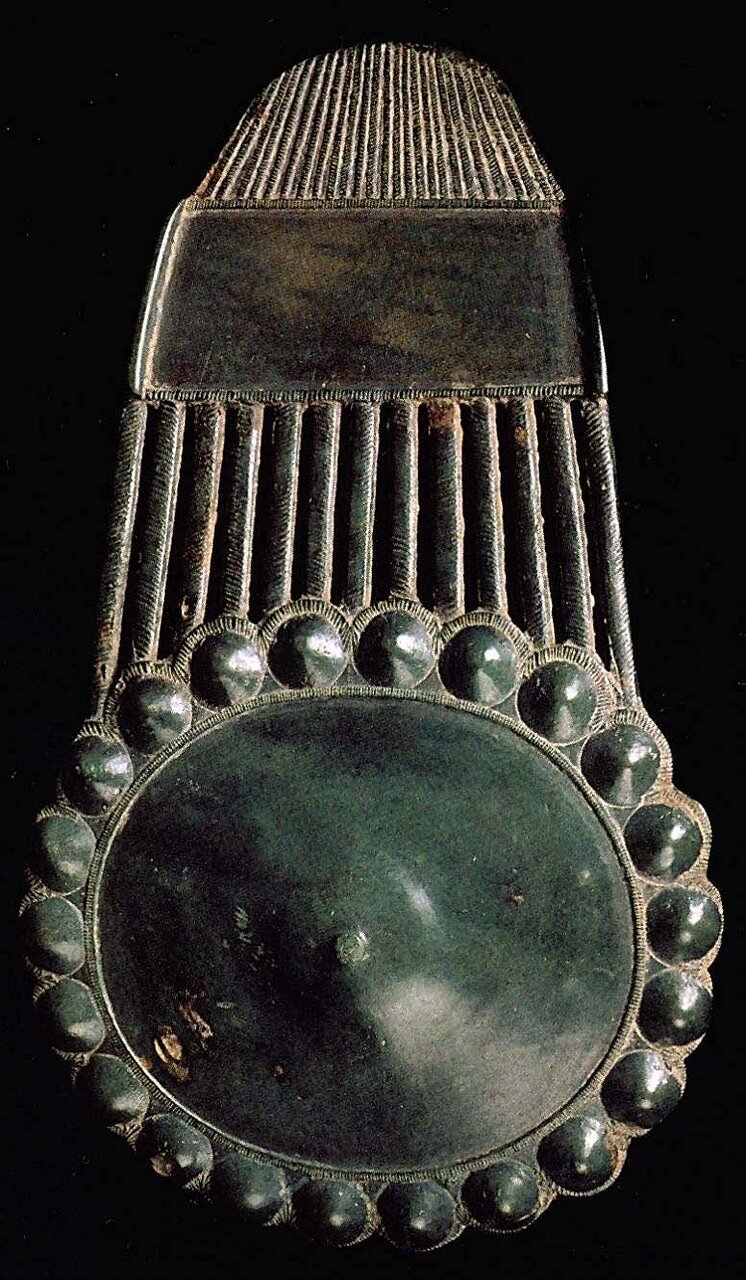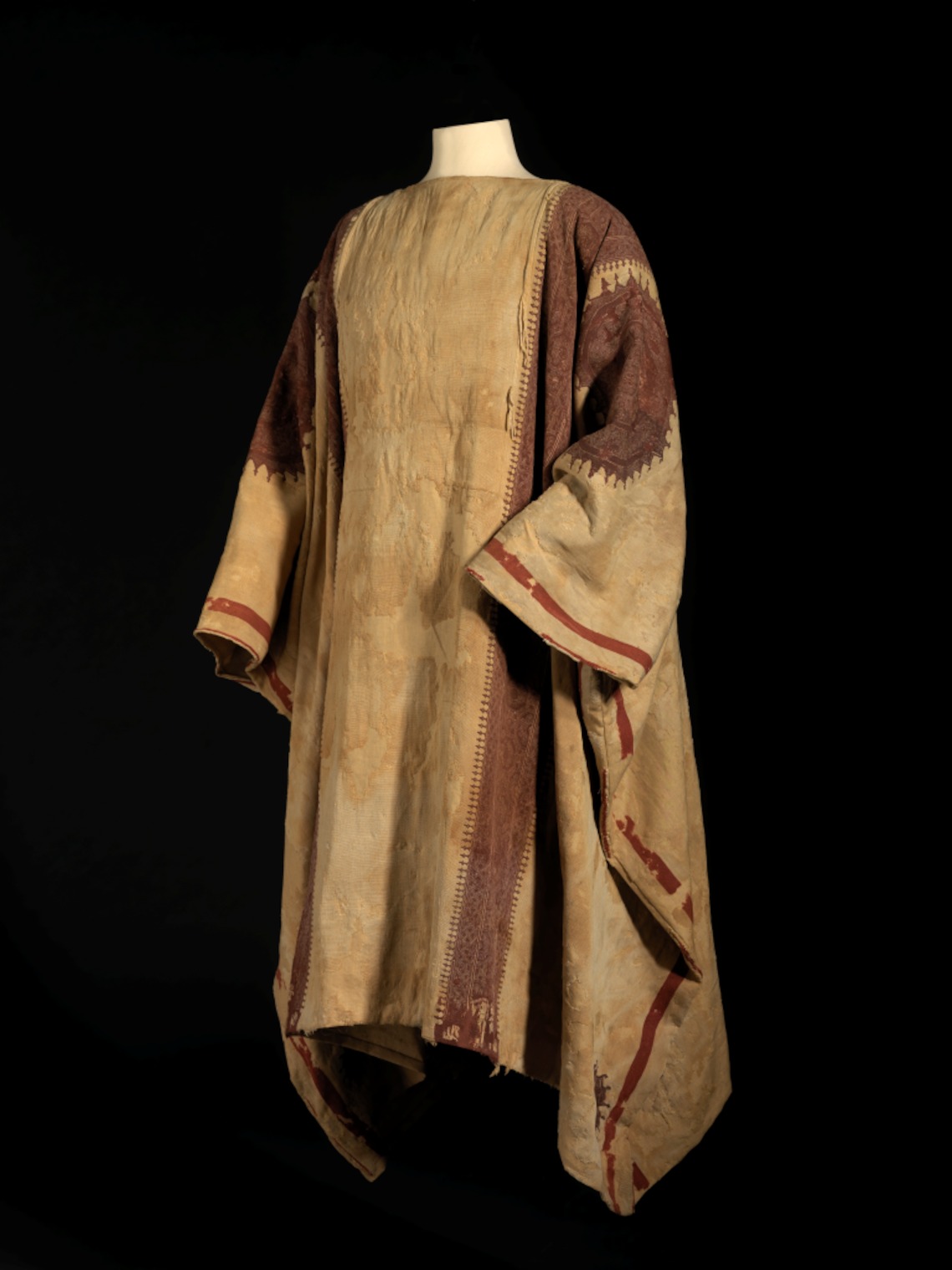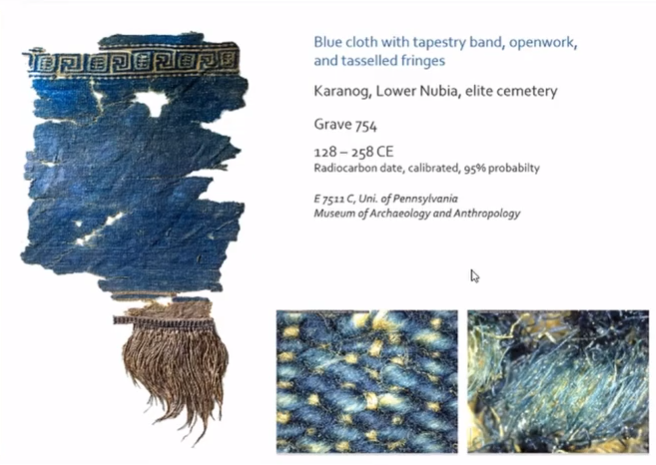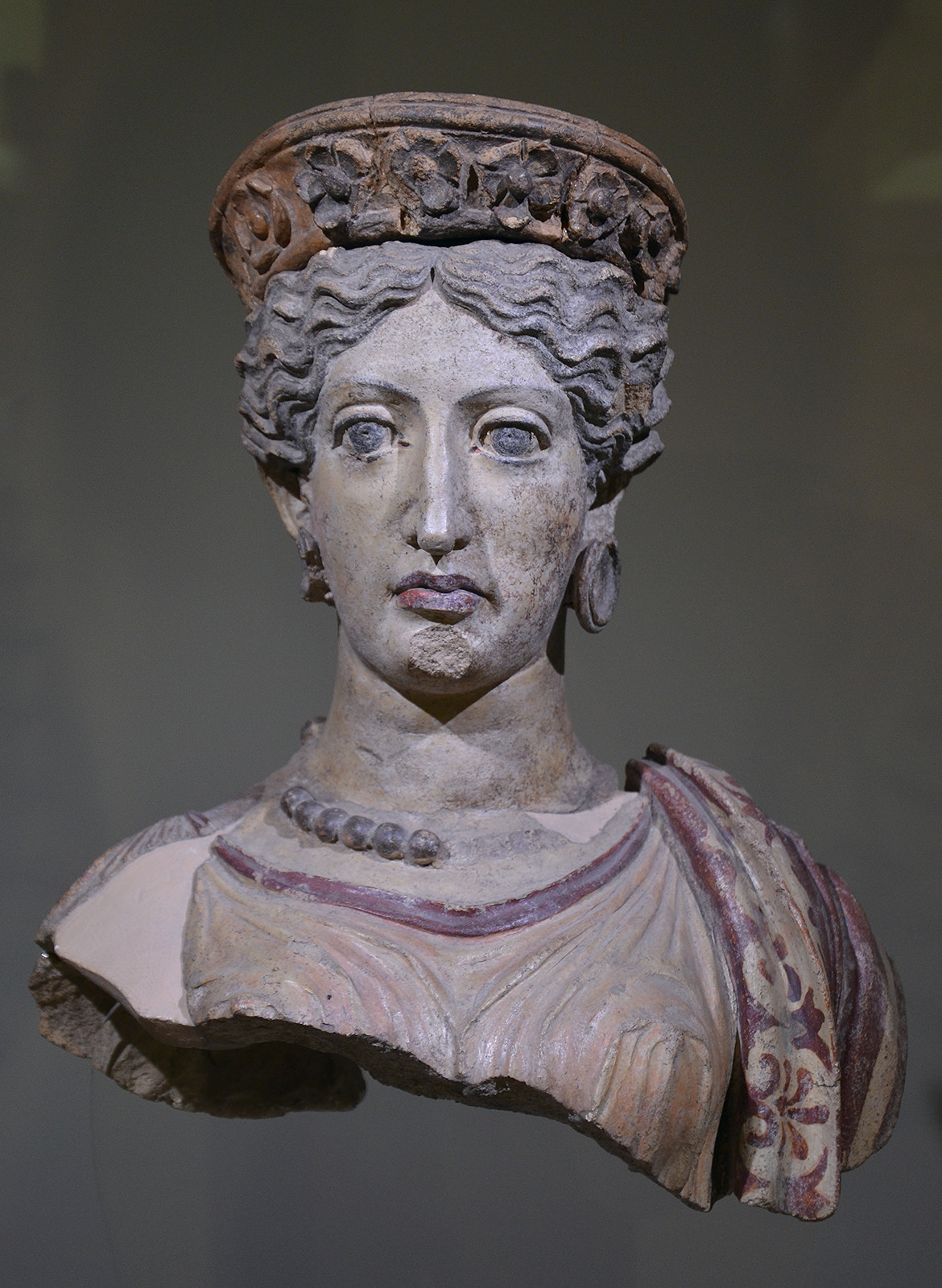

The Domina in a tunic strictoria, Dominus Julius Mosaic, Carthage. ca. 380-400.
The Domina wears a thin, seemingly see-through tunica strictoria, decorated with thick clavi, floor length with narrow sleeves, and belted under the breasts.
Bardo Museum, Picture Sean Leatherbury/Manar al-Athar
Source
Fashioning Identity in the Late Roman and Late Antique World: The Case of North Africa (c. AD 200-500)
Amy E. Place
University of Leicester, 2020
pp. 95-99
“The domina is depicted again in the lower register where she wears a thin tunica strictoria decorated with thick clavi from shoulder to hem (Fig. 4.6). She leans on a pillar and she is posed in the action of accepting a necklace from her attendant holding a casket. This attendant wears a tunica strictoria, but with a dalmatic tunic over it.
(…)
Composed of scenes of daily life, but realised in an unconventional composition, this mosaic exemplifies a more personalised and selective approach to domestic decoration (Dunbabin 1978: 24-26). The overt propagation of gender ideals thus appears to be a purposeful mode of self-representation. Due to poor documentation, details of the mosaic’s provenance, including its precise architectural setting, are uncertain (Nevett 2010: 123).
(…)
These are positive instances of self-expression: the domina highlights virtuous aspects of her identity.
In the lower register, an immediate association of the domina with sartorial activities is suggested throughher luxurious clothing and her acceptance of a necklace. In contrast, the female attendants in the upper and lower register are depicted in the same costume.”
pp. 184-185
“Depicted already bedecked in a necklace, this additional garland emphasises her wealth and her jewelled ornamentation. (…)
As Brown notes, ‘we are dealing with art by the rich that was devoted with particular zest to the theme of being rich’”

